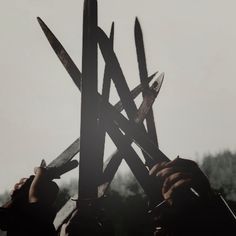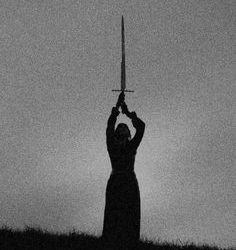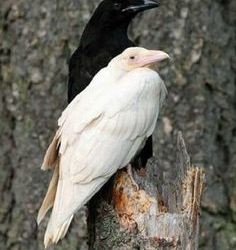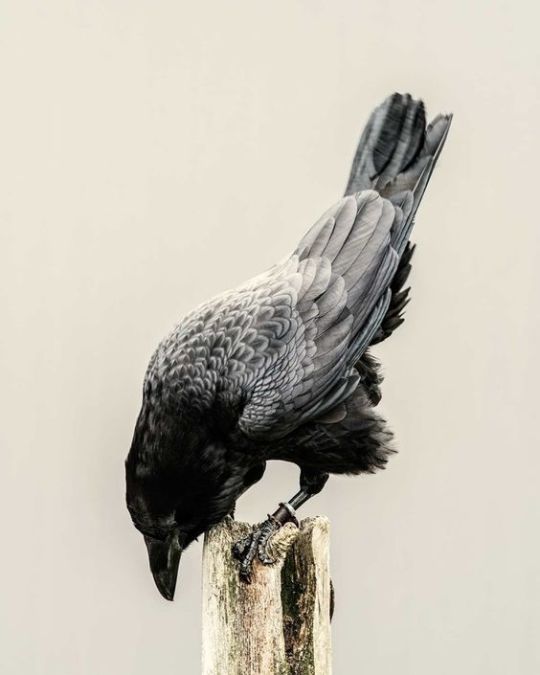#gaelic polytheism
Text
For 3 years now, my fiancé and I have been doing an autumn baking competition in celebration of the Autumnal Equinox where we invite our friends over to try our desserts and crown one of us the Autumn Baker (and for 3 years he’s won every damn time!).
When Samhain comes I go to a retreat to separate from normal life and connect to death in the woods.
And Yule will always be heralded by my fiancé and ne waking up with the sun, shivering on metal chairs together, and talking about the past year.
I cannot say this enough — connect your holidays to something real, something you look forward to, something you prepare for. It can be so difficult to make our holidays feel real and practical and actually celebratory. It’s taken me almost a decade of being pagan to actually feel my holidays. I never miss one nowadays because I love them so much.
So if you’re struggling with the Wheel of the Year or a reconstructionist calendar or something of your own making — keep going. One of these days it will feel meaningful and real because of all of the work you’re putting in now.
228 notes
·
View notes
Text
Semi-regular reminder that Gaelic polytheism is not a closed practice. You do not need to be from Ireland, Scotland, or Man or have any “Celtic blood” to worship the Gods, Ancestors, and Spirits
Anyone who tells you different is misinformed at best or probably a racist at worst
185 notes
·
View notes
Text
Something that gets left out in some eclectic discussions of the celtic fire festivals is that they are the end of one season and the start of another
Imbolg- Start of Spring
Bealtaine- Start of Summer
Lúnasa- Start of Autumn
Samhain- Start of Winter
Which makes sense because in Ireland the seasons are generally defined as:
Spring – February, March, April
Summer – May, June, July
Autumn – August, September, October
Winter – November, December, January
Like if you went up to a random person in Ireland today and asked them what season February is in they’d say Spring.
Seasons are obviously different across the world, in fact many places don’t have 4 seasons so the misunderstanding makes sense but seeing people frame Imbolc as “Oh its not a spring festival its the just bringing back of light” is just factually wrong.
#féile#irish paganism#gaelic paganism#celtic paganism#Irish polytheism#gaelic polytheism#celtic polytheism#gaelpol#iripol#witch#I think other places use the solstaces/equinoxes?#this is a weirdly common thing tho#magic#ireland#mine#witchblr
212 notes
·
View notes
Text
So as far as I'm aware in the Celtic umbrella of deities we don't have any deities SPECIFICALLY related to weaving/textiles or pottery. Which in the grand pattern of Indo-European branches (or even humanity as a whole) seems.... very odd...
What are the community's thoughts on these acts falling under the purview of Brigit or her other language counter parts? Are there other deities that would make more sense for these activities? What are our thoughts?
#gaelpol#gaelic paganism#gaelic polytheism#gaelic deities#celtic#celtic paganism#celtic polytheism#celtic deities#Irish#irish paganism#irish polytheism#irish deities#gaulish#gaulish polytheism#Gaulish paganism#Gaulish deities#brigid#brighid#brigit#bríg#bríd#*Brigantī#Brigantia#Brigindo
63 notes
·
View notes
Text
What are some daily rituals you try to do every day? - however short and simple or long and complex they might be. I would love to hear them!
I’m trying to build my own daily and weekly rituals where I set aside time for my deities.. And I’m having trouble figuring out the “best” way to do so. Just looking to see what other’s experiences are like.
#Gaelpol#Polytheism#lokean#brighidine#irish polytheism#gaelic paganism#gaelic polytheism#deity worship#deity work#paganblr#heathenry#Loki#Brighid#loki deity#brighid deity#rituals
38 notes
·
View notes
Text
does anyone have any scholarly book recs to learn about the Irish diaspora in North America? bonus points for a focus on folklore and tradition
#iripol#gaelpol#irish paganism#gaelic polytheism#irish polytheism#much appreciated; i simply havent come across what im looking for yet#outside of smaller sources#scottish diaspora id be interested in too
27 notes
·
View notes
Text
guys guys guys
I just found this really cool Irish folklore account on FB? they only have one reel up so far, but it's fascinating

(this is a screenshot; I don't know how to share reels)
go forth and enjoy
#mythology#folklore#irish mythology#irish folklore#celtic#gaelic polytheism#(not directly but Of Interest certainly)
70 notes
·
View notes
Text
This one is also pure curiosity on my part as well
#Irish polytheism#Irish paganism#Gaelic polytheism#Gaelic paganism#Celtic polytheism#Celtic paganism#Sword speaks
24 notes
·
View notes
Text
The Morrígan
“Thou hast no power against me," said Cúchulainn.
"I have power indeed," said the woman; "it is at the guarding of thy death that I am; and I shall be," said she.
The Cattle-Raid of Regamna, from the Yellow Book of Lecan
The Morrígan is depicted in the Irish cycles as a member of the Tuatha Dé Danann, the wife* of the Dagda, and a goddess ruling over the spheres of fate, death, war, and land. She is often associated with ravens, crows, and heifers, whose forms she takes.
Name & Epithets: Morrígan, Morrígu, Mórrígan (Middle Irish— “Great Queen”), Mór-Ríoghain (Modern Irish)
Role as a Goddess of War
The Morrígan is seen in the Cycles as bringing victory in war, or foretelling death in battle. In the Cath Mage Tuired, which describes how the Tuatha Dé Danann overthrew the tyrannical Fomorians, she proclaims the victory of the gods over their enemy and foretells the end of the world. In the Ulster Cycle, she is the sometimes-patron, sometimes-enemy of the hero Cúchulainn, whose death she prophesies after he offends her, and then reminded of his fate by taking the form of an old woman washing his bloodied clothes in a creek.


Role as a Sovereignty Goddess
Sovereignty goddesses in Irish tradition represent the land itself, and thus marriage to one creates a legitimate rule or guardianship over that land. In Early Medieval Ireland (and perhaps before), a king’s coronation would include a symbolic marriage to the land, thereby granting himself power and legitimacy. The Morrígan is one such sovereignty goddess, or at least perceived as one by the 12th Century, as the Book of Invasions names her the sister of Ériu, Banba, and Fódla, personifications of Ireland married to each of her three kings.


Role as a Triplicate Goddess
The Morrígan is inconsistently referred to as one of three or a combination of three figures. In the Mythological cycle, she is named as the sister of Badb (’crow’), a war goddess, and Macha, a land goddess. Together, they are called the three Morrígna. Macha is also the name of several other figures, and Badb appears barely distinguishable from the Morrígan. Whatever the case, the names appear less like the archetypal ‘Maiden, Mother, Crone’, and more like simply different aspects of the goddess given different titles, as is common in Irish religion.


*Marriage with the Dagda
The fact of her “marriage” with the Dagda is contentious but well-supported by the texts we have access to. One of her best-known stories from the Cath Mage Tuired is the Dagda’s pact with her before the battle against the Formorians. This part of the text is often mistranslated as the Dagda meeting her [for the first time] at a certain point in the year, when really a perhaps more accurate translation would be “On this day [near Samhain] the Dagda met her yearly.” Additionally, the “union” described between her and the Dagda does not appear to be purely sexual. The word used, ‘oentaith’ is difficult to translate but probably also refers to a general agreement/pact [dil.ie/33541], not unlike a modern marriage. Additionally, as a king of the Tuatha Dé Danann, a ceremonial marriage to a sovereignty and agricultural goddess such as the Morrígan would be appropriate for the Dagda and make sense to an early Irish audience.
My UPG with the Morrígan
Recommended reading + Sources
Cath Mage Tuired [Translation] [Original]
Book of Invasions
The Cattle-Raid of Regamna
#morrigan#na morrigna#the morrigan#gaelic polytheism#irish polytheism#morrigan goddess#paganblr#celtic reconstructionism#morrigan deity
68 notes
·
View notes
Text

A quick joke a small few will understand but personally, has me howling with laughter
#dorian's polytheism diary#hermes#hermes deity#aengus og#oengus#aengus deity#oengus deity#hellenic polytheism#gaelic polytheism
85 notes
·
View notes
Text
🔮 Introduction 🔮
Hello Witchblr! After being on this platform for over a decade at this point, I've finally got around to making a witchcraft blog to document my journey.

🔮 Rea (she/her) | 22 | Scottish Highlands
I've been practicing on and off over the last 3 years, however have been drawn towards this path since before I was a teenager. My journey has gone through a few different cycles since then, having been raised Catholic and going in-between personal beliefs.
My other account (@mysticwitchcraftco) was originally meant to be my witchblr account... But I'm just using it as a generic spam one at this point 😂 Feel free to give it a follow though! And it'll be the one that shows follow backs too 💕

🔮 Magical Interests
I'm particularly interested in learning more about Celtic/Gaelic Paganism. Specifically parts that originated from Scotland (though unfortunately there's not much written)
Because of this I am quite interested in some Wiccan aspects such as the Sabbats.
In terms of more 'specific niches', I am drawn towards Hearth and Kitchen Magic, Folk Magic, and Divination. I also want to learn more about crystals. Though I look forward to exploring other aspects too!
🔮 Non-magical Interests
Writing, Smallholding/Homesteading, Music, Fibre Arts, and Burlesque/Body Positive Modelling (which always seems to surprise people)

I'm looking forward to connecting with other like-minded people and sharing my practice journey!
[This post might be edited as I go along and remember more things to put here.]
#witchblr#kitchen magic#kitchen witch#witchcraft#gaelic polytheism#scottish#scottish pagan#scottish witch#gaelic witchcraft#celtic#paganism#pagan witch#celtic wicca#wiccan#pagan#folk witchcraft#scotland#introduction#intro post#green witch#baby witch#kitchen witchcraft
13 notes
·
View notes
Text
Things that can and should coexist:
Your spiritual experience is your own. Spirituality and religion is a personal process, and relying on what resonates with you, what your intuition tells you, and what feels true can help you to have an authentic practice. At the end of the day, it’s your spirituality/religion, not your parents’, not your friends’, and especially not the internet’s.
Your experiences are subject to biases. You are fallible. Connecting with a mental health professional, with friends of similar and different beliefs, and with a community will help you to hone discernment and remain grounded. You are not the only person to ever have a spiritual or religious experience.
#paganism#witchcraft#wicca#hellenic polytheism#gaelic polytheism#heathenry#helpol#norse polytheism#celtic paganism#reconstructionism
261 notes
·
View notes
Text
I take a sort of “rule of cool” approach to my pagan faith. I use archaeology and history as my baseline, and I freely incorporate elements from folklore and superstition to fill in the gaps. However, I think there’a an argument to be made that if we want Gaelic paganism to thrive as a living religion, we have to allow innovation and reinterpretation. Do we have any proof of Ogham being used for divination? Nothing concrete. Is it cool and do I still do it tho? Fuck yeah.
As long as you’re honest about what’s historically attested, what is speculative, and what is newly created, I don’t see why old and new can’t coexist. They do in my faith anyway.
Fuck that neo Druid and Celtic shaman shit tho. Get that shit right tf outta here.
#not to shit on strict recons#I admire that approach#gaelpol#gaelic polytheism#gaelic paganism#paganism#irish polytheism#polytheism#this post does not include wiccans and neo druids
36 notes
·
View notes
Note
Forgive me if this is a foolish question, but would you happen to know if there’s any sources out there on historical prayer behaviors? IE body position, gestures, etc. I don’t come from a religious background, so I struggle to know to go about praying even when I know what I want to say
Gestures and actions during Irish/Gaelic Pagan prayer.
This is not a foolish question at all! In fact it is a great one. Honestly finding the right words is the hardest part. There is little in the way of documented proof of how pre christian Gaels prayed so reconstruction is necessary. This makes it tricky to find authentic sources, thankfully there is a few practice's we can reconstruct with a lot of certainty. (Sources in bracketed links)
Clockwise/Deiseal movement
The act of moving in a circle in a clockwise direction (deiseal) is frequently seen to be auspicious and is used in many Irish Christian rituals. Many of these practices are still done today, especially at holy wells or other pilgrimage sites such at the various stations on Croagh Patrick (link). The opposite of this is anti-clockwise or Tuathal is frequently used in curses. This is a recurring theme throughout Irish and Scottish folklore and has been argued to be partially of a pre Christian origin(Link to book containing a chapter on the topic specifically chapter 10)
This is usually done at Holy Wells while doing the rosary. The well itself or an object near it like a statue, rock or tree is encircled by the worshiper usually 3 or 7 times while reciting the rosary. (link)(link)(link). And is a still living practice.
This clockwise movement was also used in medieval rituals, with supposedly in the Book of Fenagh, an inauguration ritual is described where a bell shrine was walked around a king and his solders clockwise. (in book chapter 10).
The use of the word deiseal and its association with blessing led it in the past to be an equivalent to "bless you" after a sneeze. (link). The sunwise or clockwise direction is synonymous with blessings.
Head down, eyes up
The Carmina Gadelica contains a number of prayers from gaelic scotland. Many of which follow a standard christian practice and just as many are situational in nature like to be said while washing ones hands, however certain ones stand out as being representative of a greater traditions of actions due to their unusualness.
References to raising ones eyes (link) and leaving the palms open and outstretched are mentioned (link page 290)
Both women and men were said to curtsey with men doing a bowing motion much like a curtsey in that it involved the bending of the left knee to the side and the right one straight as a show of respect (link)
To summarise with a quote:
"So the lifting of hands, raising of the eyes, and the bowing of the head are all actions that could be done during our prayers. In raising our hands we show a gesture of giving, just as we ‘give’ prayers of thanks, or blessing, or whatever other purpose we might be praying for, especially since there seems to be a since that we’re meant to raise the palms up to the sky (or moon, more to the point) instead of simply holding our hands out, palms up. It’s less a gesture that might suggest we’re asking for a handout than it gives a sense that we’re reaching out."
-An Introduction To Gaelic Polytheism by Marissa Hegarty
Curse pose
While not involved with worship, poets when preforming a satire, often magical in nature were said to stand on one foot, with one eye closed, holding up one hand, and sometimes speaking with one breath. This seems to specifically used for cursing however.
What to incorporate into your pagan practice
I would then recommend that while praying, walking in a circle in a clockwise direction with a bowed head, eyes up, while holding out your hands with the palms skyward would be appropriate. I like to have one hand over the other. After the prayer has concluded a curtsey should be done.
If anyone else has anything to add please do so with what gestures and actions you take during prayers. I hope this answers your question and that it was at all helpful.
#mine#ceist#draíocht#gaelic paganism#celtic paganism#irish paganism#irish polytheism#gaelic polytheism#celtic polytheism#pagan#magic#prayer#paganism#witch#witchblr#research based paganism#please anyone share how you do it#sometimes a direction can be so important to someone that person is me#resources#gaelpol#also check out the two books ive linked#celtic#ireland#scotland#if anyone can source any examples from irish mythology or early lit that would be great#ive seen someone stuff but i can't source it so I did not include#especially deiseal related stuff
85 notes
·
View notes
Text


Fertility bed?
This is our new four poster and attachable canopy bed! For sale for less than 10% of the asking price!
Someone, give me some magic ideas to bless this bed! Not for fertility, because I think the wheat shafts represent that already. Maybe?
Anyways, my bed is magical now!
#personal post#pagan bed#pagan#fertility bed#blessing suggestions#magical ward#magic#witchcraft#witch#gael pol#gaelic polytheism#cottage witch
21 notes
·
View notes
Text
Something funny about being a celto-norse pagan witch living in the US Southern ✨Biiiiible✨ belt (specifically Arkansas) is that in public, when, for example, after checking out with the cashier, you tell them “have a blessed day!”
They automatically usually think you’re Christian; however, did you specify who is doing the blessing?
Nope!
They’re thinking you meant it from YHWH/Jehovah/Jesus/etc. but they don’t know that you actually meant it from yourself or *insert deity here*.
“Have a blessed day!” is a great closeted witch phrase!
#autistic witch#mentally ill witch#neurodivergent witch#disabled witch#hearth witch#norse pagan witch#witch#witchcraft#baby witch#beginner witch#green witchcraft#celticpagan#crystal witch#hedge witch#irish polytheism#welsh polytheist#gaelic polytheism#welsh witch#astrology witch#norse paganism#norse heathen#norse deities#norse witch#irish paganism#irish witch#kitchen witch#eclectic witch
38 notes
·
View notes